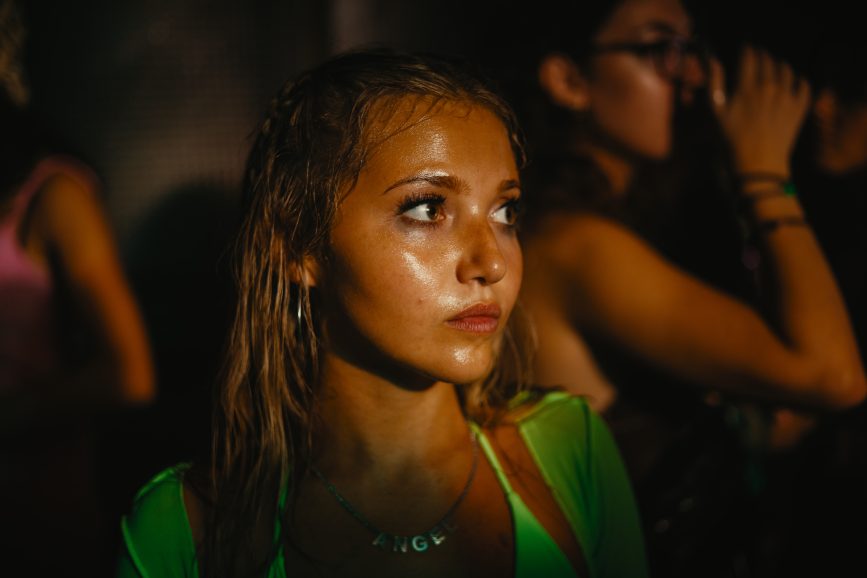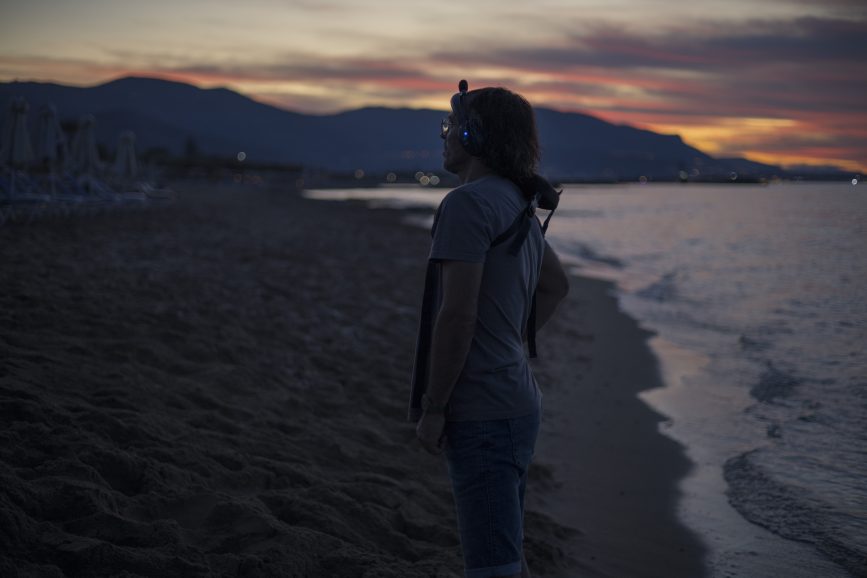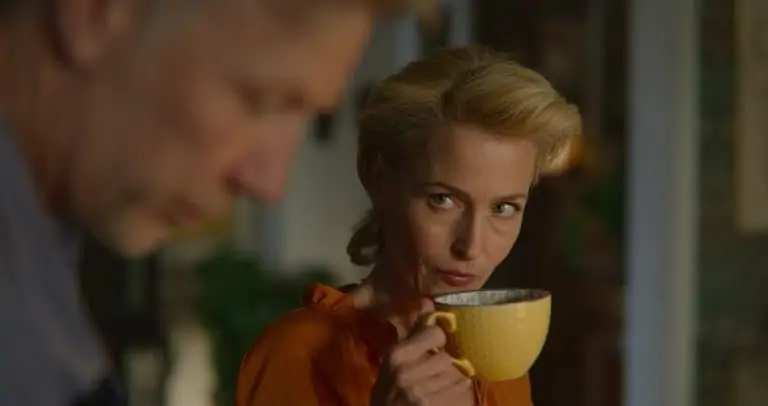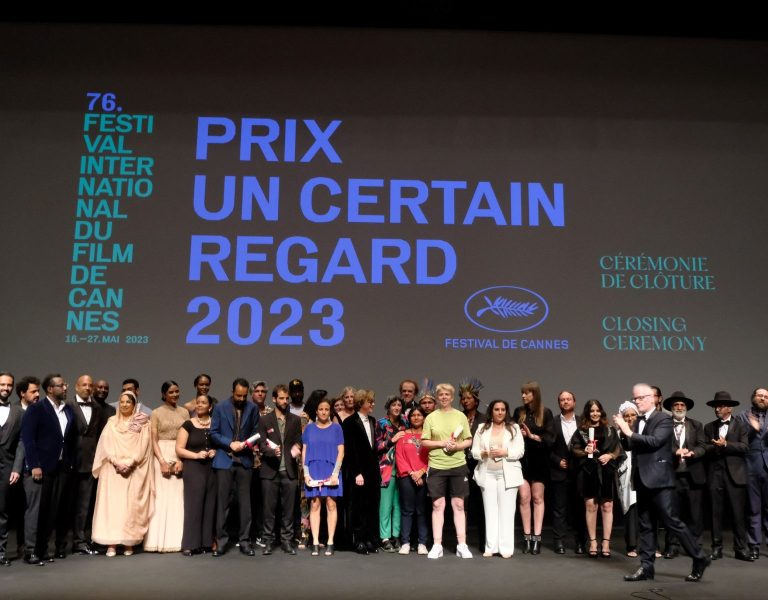TROUBLE IN PARADISE
A party holiday with pals is a British teenager’s rite of passage, but Molly Manning Walker’s debut feature as director shows a darker side to the traditional trip abroad.
Ever since How To Have Sex bowed at the Cannes Film Festival in May 2023, where it became the must-see movie of the official selection, it’s been showered with critical acclaim. A story that grapples head-on with issues of sexual consent, it claimed the Un Certain Regard award from Cannes, announcing its British-born debut writer-director Molly Manning Walker as a huge talent to watch. At the time of writing, the film has been nominated for an impressive 13 awards, including Best Film, at the British Independent Film Awards.
Part of its success is due to the work of Nicolas Canniccioni, a Canadian-based cinematographer with two decades’ worth of experience on films like Genesis (2018) and Frontiers (2023). But when Canniccioni first met Manning Walker, he was a little taken aback. Her script about three British teenage female friends who go on a hedonistic holiday to Malia, Crete, was a little out of his wheelhouse. “I am based in Montreal and I know more about Canadian teenagers!” he laughs, when we connect over Zoom.

Nevertheless, Manning Walker had seen some of his naturalistic-leaning work. “She was looking for someone who can do fiction under some kind of documentary environment,” explains Canniccioni, whose own work began in non-fiction – including 2014’s La marche à suivre, which was filmed in a Quebec high school. He estimates that his fiction and documentary work influence each other. “I think my fictions looks more like documentaries, and the documentaries more like fictions!”
Intriguingly, Manning Walker herself started out as a cinematographer, filming commercials and music videos before shooting Charlotte Regan’s well-liked Scrapper, which was released in August 2023, just two months before How To Have Sex hit British screens. “I wouldn’t have been able to make this film without that experience,” she says. “Charlotte is a beautiful human being and she runs a set in a very similar way. She’s all about collaboration and teamwork and making sure everyone feels comfortable to do their best creative work. So I really took that from her.”
Canniccioni had worked with DPs-turned-directors before, so that held no fears. He’d also shot club scenes in the past – something that How To Have Sex had plenty of, with its revellers bathed exotically in neon purples, oranges and greens. “There were a few club scenes with real people mixed with actors [in my earlier work],” he says. “So she thought that I can light in a way to keep the mood and to keep the feeling of space. That was the idea, to give a space for the actors to perform under a realistic setup.”

Fun in the sun
In How To Have Sex, the film follows Tara (Mia McKenna-Bruce) and her friends Skye (Lara Peake) and Em (Enva Lewis) as they bounce from bars to clubs, having the time of their lives. Early on, it was decided that the camera would remain in proximity to the actors, as if it was one of the island’s many partygoers. “All along, we are very close to the characters,” says Canniccioni. “What can I say? We are not in observational mode. We’re more in participation mode.”
To capture this intimate feel, the cinematographer used the ARRI Alexa Mini LF – a large format digital camera. “It’s very compact,” says Canniccioni, who was impressed by its lightweight nature. “If you need the camera to be extra minimal, just the lens and almost nothing else, you can do it. And you hold it on your chest. So there were many configurations possible with this camera. It was a perfect camera for us to react with the actors, to go inside a crowded space without hitting people. When there’s a lot of people around, you don’t want to hit someone with the camera.”
As for the optics, the production opted for a set of Canon K35 lenses. “Those lenses, they cover the large format. So if you want to get the most out of them, it’s good to put them on a large format,” Canniccioni explains. “The principal lens was the 35mm and 55mm in large format. There were a few moments with the 18mm and the 24mm. But mostly it was with the 35mm and 55mm. It’s not the same for each brand, but it’s 55mm in Canon. There was another zoom, a Cooke 25-50. And there was a Master Prime 150mm handheld, because Molly is very adventurous.”

With filming in Malia taking place over two months, beginning in September 2021 when the island was out of season, the party scenes were up first and were among the most logistically challenging of the shoot. Manning Walker calls these sequences “a real baptism of fire”, not least because she and her team were marshalling 200 to 300 extras, who were locals but handpicked by the casting department because they looked more like British holidaymakers.
While Canniccioni was determined to film in natural light where possible, the club scenes meant he could also make use of the venues’ lighting systems. “Inside the clubs we spent a lot of nights looking at the feeling of the clubs and that allowed us to keep these feelings,” he says. “But sometimes you just need to take away some lights. I needed to take away some colours to have some different looks in the clubs.”
Sometimes, lights were added – as in the scene at The Crush, a real-life poolside venue hidden away in the popular Cretan Malia Park. “There were some ARRI SkyPanels [that we added] because they’re very fast to install. And we can switch the colours easily. I don’t want to make commercials for ARRI. But those SkyPanels were incredible. Because you can change the colours. You can change the intensity, the power. So it is a very nice light.”

Safe spaces
As playful as the earlier scenes are, with each club scene taking on its own characteristics as Tara and her friends set out to party, the film adopts a darker tone in the second half. Still a virgin, Tara feels pressure to enjoy her first sexual experience on holiday, something which becomes a very real option when the girls start hanging out with some lads from Bradford staying in the adjacent hotel room. Shooting the sex scenes, as Manning Walker delicately dives into issues of consent, was always going to be challenging.
The production employed an intimacy coordinator, Jenefer Odell. “Everyone was aware of the difficulties, what it means for the actors to do that,” says Canniccioni. “Sometimes, there are some people who don’t think about that. They think, ‘Actors, it is their job.’ But they need to be in really good hands to do those kinds of scenes. So there was a lot of preparation. And on the day of the shoot…it was very quiet, respectful. It was my best experience. We should always have someone like Jenefer on the set for those intimate scenes.”

An intimacy coordinator was just part of the set-up. As Manning Walker notes, the support from financiers Film4 and BFI was crucial to aid these scenes. “They knew from the beginning, if we were going to make this film that the support had to be there. We had on-call counsellors, we had a counsellor on set for the first few weeks. It was like a real big priority for us that the set was safe.”
One of the two sex scenes takes place in Tara’s hotel room, the morning after a huge night out. All shot in a real hotel space, it was a challenge to light. “This was a very small space,” says Canniccioni. “So the light was always inspired by what we saw in prep. We started, Molly and me, a lot of time watching the locations, choosing the locations, looking at the light, the path of the sun, and making choices, strategic aesthetical choices. So for example…I can see that the sun is hitting hard on the floor. It makes a beautiful light, very natural. But you cannot count on that in the day of the shoot. So I had some specific lights to mimic this kind of strong shaft of light.”

Other scenes that stand out include the moment Tara walks down the deserted main strip, the street covered in debris from the night before. A stark and effective shot, the transition from the day-glo of the nightclub scenes to the harsh morning light, as Variety magazine noted, is “as if we’ve woken up in another dimension, with a crushing hangover to boot.” The scene was created in October, long after the tourists had left. “It’s inspired by reality, but we needed to recreate it,” says Canniccioni, who praises the art department for replicating the morning-after carnage.
Among his key crew, Canniccioni credits his “crucial” first camera assistant Giorgos Maniatis, although he is at pains to point out what a team effort the film was. “Luke Moran-Morris, the set designer; George Buxton, the costume designer, all those people. The cast was incredible. And on the top of that, there was Molly. She is a force of nature. She’s very good at putting people together. There was a good vibe on the set.”
When it came to the colour grading, the production employed Joseph Bicknell from Company 3 in London. “Joseph is one of the top colour graders,” says Canniccioni, who was back in Montreal by this point. “Molly was there with Joseph and they sent me the rushes, graded,” he adds. “At the end I just needed to trust what is going on in London.” While the grade undoubtedly gave the film the final polish it needed, the sublime work from Canniccioni and those around him are what gives How To Have Sex its remarkable artistry.











